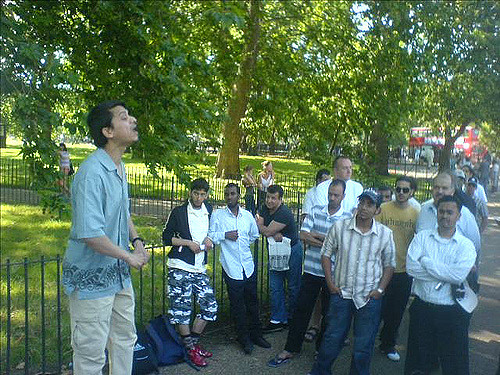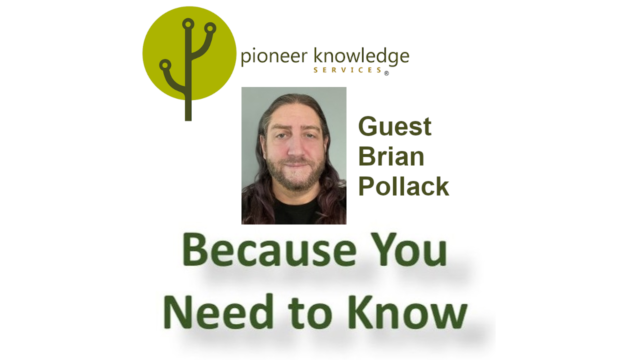
Are we in the midst of a public space crisis?
Zenovia Toloudi, Dartmouth College
Public space that encourages dialogue and welcomes everyone – regardless of age, wealth, race, religion or sexual orientation – is a core aspect of democracy. As artist and social activist Krzysztof Wodizko put it, these places exist for both “the privileged and the unwanted.”
But few of today’s public spaces adequately prioritize this mission.
Figuring out how to change this is at the core of my own work. In my creative practice and research, I investigate how classical concepts, buildings, and small structures for public space – the kind that existed during the earliest days of democracy – have been repackaged during contemporary times.
Bottom line: Welcoming public spaces are in decline – at least, those that exist in the real world.
Increasingly, debates that once took place face-to-face happen on the internet, on Facebook, Twitter and countless other digital forums and platforms. You might say the Squarespaces of the world are replacing public squares.
But if the internet is a democratizing place for debate – one with unprecedented capacity to draw people together – it is also one with flaws. The challenge, as I see it, is to fuse the advantages of both real and virtual spaces, while limiting the pitfalls.
A place for debate
Since ancient Greece, public space has been vital to people and cities.
It’s where citizens debated everything, from current events to business to the nature of the universe. It’s where they voted for politicians, preserved the law and participated collectively in making decisions for civic matters – all the elements that foster a functioning democracy.
In fact, the birth of democracy in fifth century B.C. didn’t arise just from a combination of philosophical ideas, scientific discoveries and technological advances. Dedicated physical spaces also played a huge role: civic centers and marketplaces, along with open spaces between buildings, where people often mingled.
The most notable example is the Athenian Agora, an open square that served as a place for political gatherings, the buying and selling of goods, religious services, athletic events, philosophical discussions, educational events and art displays.
Structures called stoa (for example, in Athens, the famous Stoa of Attalos) were covered walkways or porticos that existed for philosophical discussions and debates. Here, speakers and politicians would converse with the Athenian people from a pedestal called the bema.

DerHexer/Wikimedia Commons., CC BY-SA
It’s true that some of these building structures exist today. We might see versions of the stoa in certain buildings (like Brazil’s Supreme Court), or a version of the bema on college campuses. However it’s almost impossible to find contemporary examples of the agora, where anyone could actively participate and shape civic matters.
Space for some, not all
Today, urban growth eliminates accessibility to public spaces. And when public spaces do get created, they’re often designed for the privileged and wealthy.
The City Park Facts database of 2015 shows how much park space exists for each citizen in cities across the United States, and, not surprisingly, high-density cities are squeezed for space. For example, cities such as New York and Chicago have 4.6 acres per 1,000 residents; on the other hand, low-density cities such as Anchorage have 2,397.2.
A 2003 white paper by The Trust for Public Land noted how “U.S. cities are park-poor,” with residents of many cities lacking adequate access to parks and open space.
But the report also noted how low-income, minority neighborhoods are especially lacking in open space. Take Los Angeles. In predominantly white neighborhoods, they found 31.8 acres of park space for every 1,000 people – a number that dwarfs the park space in predominantly African-American and Hispanic neighborhoods (1.7 and 0.6 acres per 1,000 people, respectively).
Meanwhile, in New York City, High Line Park is a relatively new public space that has been highly praised by media and press.
The promenade, which winds along a former elevated freight rail line, borders some of the city’s wealthiest areas. It has become a major draw for the tourists and locals who populate Chelsea, now one of the most expensive neighborhoods of the city. To be sure, High Line does not bar entry to “undesirables.” But the rising rents and increasing living costs around it eventually dislocate existing businesses and poorer populations to other parts of the city, making trips to these new, gleaming parks expensive and time-consuming.

David Berkowitz/flickr, CC BY
Keeping out ‘undesirables’
So what’s behind our notable shortage of truly democratic public spaces?
On the one hand, budget cuts have crippled the government’s ability to invest in public spaces, such as parks, for poor neighborhoods.
Most of New York City’s 2,100 parks require public funding. But as a New York Daily News article noted, the city’s Parks Department staff has been cut by 40 percent since 2008. In addition, the budget for tree pruning and stump removal has been slashed from US$7 million in 2008 to $1.4 million. And the 29,000 acres of parks now have 20 percent fewer gardeners than in 2008.
On the other hand, wealthy philanthropists who often fund or contribute to public projects like the High Line will often end up simply serving their own interests and needs by investing in convenient areas that are close to their homes and offices. Indeed, many high-profile parks in wealthy neighborhoods – the High Line, Bryant Park and Central Park – are maintained by a mix of of private and public funding, which mitigates the effect of government budget cuts.
Moreover, instead of prioritizing open public spaces for exercise or family gatherings (important for populations that cannot afford second homes outside the city), private funders tend to prefer particular types of facilities – amphitheaters, footpaths and gardens – that are less amenable to large groups or physical activity.
When it comes to limiting accessibility, private funders aren’t the only culprits. Neighborhoods and cities have implemented a vast array of codes and regulations that block access to public spaces.
For example, cities ranging from San Francisco to Philadelphia now have anti-homeless measures such as camping restrictions and cutting down on homeless food services. A few years ago, workers at San Francisco’s Bill Graham Civic Auditorium even started broadcasting loud construction noises overnight to prevent the homeless from falling asleep on the steps of the building.
Other cities have purposely designed public places in ways that restrict “undesirables” – like the homeless – from getting too comfortable. These include the use of arms on benches to prevent people from lying down and the addition of spikes on flat surfaces.

Kake/flickr, CC BY-NC-SA
Extra security and ubiquitous surveillance – which have increased since the advent of global terrorism – not only discourage gatherings and eliminate services, but they also transform public space in ways that make them even more dangerous.
In sum, public spaces have gradually transformed into areas that are less open, less democratic, less comfortable, less enjoyable and less “ours.”
The limits of ‘e-democracy’
With public space shrinking, it’s worth noting that web access is expanding and absorbing much of the dialogue and debate that once took place in person. According to the Pew Research Center, approximately 65 percent of American adults use social networking sites, a number that is expected to only grow.
Internet, mobile and other communication technologies certainly create opportunities for citizens to participate in addressing public challenges. There’s even a term for it – e-democracy – and a number of public- and private-sector platforms provide an avenue to citizen engagement, whether it’s social networking, online forums or argument maps. By being able to access to transparent information, these platforms can reinforce participation, create inclusiveness and promote voting equality.
Meanwhile, social media platforms allow people to express solidarity, raise awareness about global events and engage in what some have dubbed “hashtag activism.” For example, during Greece’s controversial bailout deal with European Union, activists started using the hashtag “#ThisIsaCoup” on Twitter. An analysis showed that within a month, it had been used in more than 600,000 tweets around the globe, while reaching audiences on platforms other than Twitter.
However, despite these positives outcomes – and contrary to what some may think – social media does not necessarily foster a stronger democracy. New York Times journalist Thomas Friedman has argued that social media can initially act as a powerful voice, but does a poor job keeping momentum and effecting actual change. This is evident in the aforementioned hashtag example: Even if #ThisIsACoup trended globally, it didn’t accomplish much beyond expressing anger, and it failed to influence the negotiations between the two sides.
Social media has also been shown to reinforce polarization and hate speech. Look no further than the echo chamber phenomenon, where people tend to listen only to those who share their beliefs, and the trolling of strangers.
Moreover, social media is still not sufficiently accessible to scores of underprivileged people. Pew Research has shown that in the United States, although the number of low-income households using social media has risen, those in higher-income households are still more likely to use social media.
But there also seems to something else lost when we resort to debating in online spaces, behind the comfort and security of our screens.
Social scientist Sherry Turkle has found that digital technology harms users’ abilities to feel empathy and self-reflect, which causes people to avoid face-to-face conversations and other traditional forms of communication.
According to Pew, 29 percent of cellphone users even admit they’ll use their phones when out in public specifically to dodge interactions with other people.
Speaking publicly and candidly
In my work, one of my goals is to design public spaces that encourage dialogue, participation, collective activities, interaction and exchange – in other words, democracy.
Some cities are building libraries and museums in economically distressed neighborhoods. This is one way to create public gathering places and foster community engagement.
My own project, Parrhesiastic Play (inspired by the Greek word “parrhesia,” which means “to speak freely”), explores free speech at the intersection of public, physical space and the digital world.
For the project, chairs and sculptural letters can be placed in public areas; passersby are then free to rearrange in them into different forms, words and phrases. There are multiple locations, and cameras are constantly recording the people, allowing them to communicate with people in the other Parrhesiastic Play locations around the world.

Zenovia Toloudi / Studio Z, Awarded proposal for Theatrum Mundi’s “Designing For Free Speech” challenge., Author provided
By linking physical spaces with a live webcam network, Parrhesiastic Play gives people a stage to “perform” before the cameras. It’s a playful way to comment on the rise of surveillance while interacting with a large audience.
While this is just one project, I hope to, in my own way, comment on the need to create architecture for the public that integrates the “free” dialogue that happens in the realm of social media with physical, everyday activities. Parrhesiastic Play is one example of how it’s possible to create user-friendly structures in public squares that promote dialogue and social interaction, while reinforcing freedom of speech and democracy.
![]()
Zenovia Toloudi, Assistant Professor of Architecture, Studio Art, Dartmouth College
Article source: This article was originally published on The Conversation. Read the original article.
Image source: Moblog: Speaker’s corner by Jaap Stronks is licensed by CC BY-SA 2.0.






